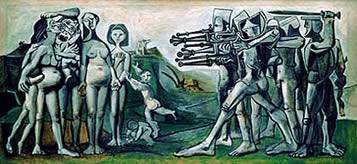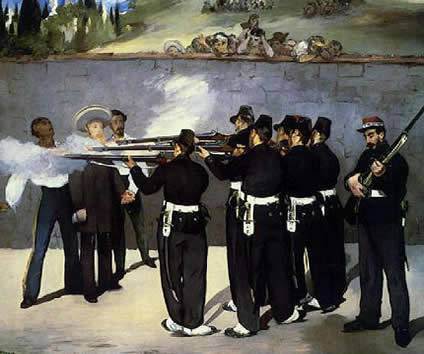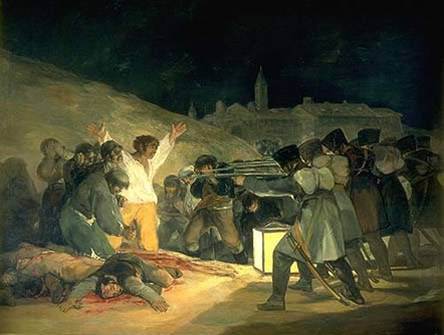Pablo Picasso: tradition and vanguard
With no doubt the most famous and important painter of the 20th century, Pablo Picasso has achieved such popularity that any Museum or Foundation organizing an exhibition about his oeuvre is on serious risk of falling into the repetition or the topic. To avoid it, the Prado Museum and the Art Centre Reina Sofia -both in Madrid- have organized an exhibition entitled “Picasso: tradition and vanguard” that -instead of showing only works by the Spanish artist- exhibits his works along with other by the earlier masters that he admired.



3 works “dialoguing” in the Reina Sofia:
Top: Pablo Picasso: “Corea, 1951”, 1951
Middle: Manet: “The execution of Empereor Maximilian”, 1867
Bottom: Francisco Goya: “The executions of May 3rd”, 1814
“Dialogue” is here the key word. These “pictorial dialogues” are focused on two different blocks: while the Prado recurs to the traditional form of exhibition, showing works by Picasso from the blue and rose period to the cubism and surrealism, the Reina Sofia focus on Picasso’s masterwork -the famous ” Guernica” – celebrating the 25th anniversary of the return of this important painting to Spain (also the 125 anniversary of his birth).
The painting is surrounded by other works denouncing the atrocities of war: “Korea , 1951” by Picasso himself (a work that was considered “anti-American” and prohibited in South Korea for many decades), the famous “The executions of May 3rd” by Francisco de Goya y Lucientes, and “The execution of Empereor Maximilian” by Edouard Manet.
For this exhibition, the Prado and the Reina Sofia have collaborated with other great museums for all over the world, such as the Metropolitan of New York, the Centre Pompidou from Paris, and -of course- the Picasso Museums from Paris and Barcelona.
Follow us on:


